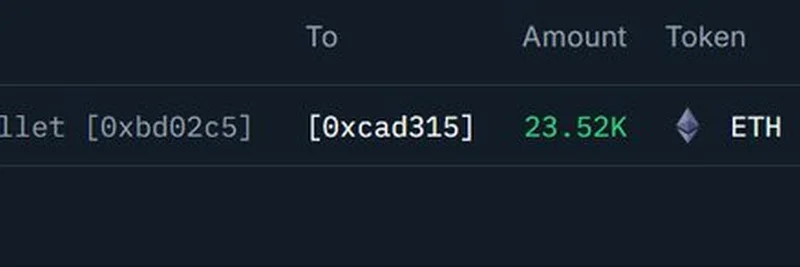In the fast-paced realm of cryptocurrency, where innovative projects pop up daily, a single tweet can ignite widespread debate about financial futures. Recently, Seb Montgomery, a content creator and GM at Validator.com, posted a thought-provoking calculation on X (formerly Twitter) about the ORE token. His question? "How much $ORE do you need to retire?" Let's dive into his reasoning and explore what it means for investors eyeing this Solana-based asset.
Breaking Down the Tweet
Montgomery's tweet lays out a simple yet enticing scenario:
how much $ORE do you need to retire?
current: ~$450, MC ~$180M
staking APR: ~25%
thesis: strong SoV; if MC hits ~$4B → price ≈ ~$10,000
at that level, 60 $ORE = $600k.
25% yield ≈ $150k/year, enough to live a comfortable lifenot financial advice, just math
At its core, this is a back-of-the-envelope calculation assuming ORE evolves into a robust store of value (SoV), much like Bitcoin. Store of value refers to an asset that holds or increases its worth over time, protecting against inflation or economic uncertainty. If ORE's market capitalization (MC) climbs to $4 billion—a roughly 22x increase from the $180 million mentioned—the price per token could hit $10,000.
With 60 ORE tokens, that equates to a $600,000 portfolio. Staking those tokens at a 25% annual percentage rate (APR) would generate about $150,000 in yearly passive income. For many, that's more than enough to cover living expenses without touching the principal.
What Is ORE Token?
For those new to the scene, ORE is a cryptocurrency built on the Solana blockchain, known for its lightning-fast transactions and low fees. What sets ORE apart is its Proof-of-Work (PoW) mechanism, inspired by Bitcoin. PoW is a consensus algorithm where miners solve complex puzzles to validate transactions and secure the network. Unlike Bitcoin's energy-intensive mining, ORE is designed to be mineable on everyday devices like laptops or phones, making it accessible to anyone.
Launched by developer Hardhat Chad, ORE aims to blend Solana's efficiency with Bitcoin's fairness and decentralization. You can mine ORE directly through wallets like Backpack or explore the project on its official site at ore.supply. Recent updates include a revamped mining protocol to improve sustainability and revenue accrual, as announced on their X account @OREsupply.
Current market data shows ORE trading around $400 (as of November 2025), with a market cap hovering near $160 million, according to CoinMarketCap. The staking APR of 25% comes from locking tokens to support the network, earning rewards in return—similar to earning interest in a savings account, but with crypto volatility.
The Bull Case: Why Could ORE Reach $4 Billion Market Cap?
Montgomery's thesis hinges on ORE becoming a premier SoV on Solana. Solana itself has exploded in popularity due to its scalability, hosting everything from DeFi apps to NFTs. If ORE captures attention as "digital gold" on this chain, adoption could skyrocket. Factors like decentralized mining pools reduce centralization risks, potentially attracting more users and investors.
Community buzz plays a role too. With Solana's ecosystem thriving, tokens like ORE benefit from network effects—more users mean more security and value. If big names in crypto continue to endorse it, that $4 billion MC isn't out of reach. For comparison, other Solana tokens have seen similar multiples during bull runs.
Risks and Community Reactions
Of course, crypto isn't a guaranteed path to riches. Prices are volatile; ORE recently dropped over 25% in a day, highlighting the risks. Montgomery wisely disclaimers this as "just math," not advice.
Replies to the tweet reflect a mix of optimism and skepticism. One user recalled similar hype threads from 2021 bull markets, warning that attention-driven pumps can fade. Another questioned ORE's utility beyond mining hype, asking, "But what does ORE do?" A reply emphasized its decentralized mining as a "real moat," suggesting long-term compounding potential. Others debated the realism of a $4 billion cap, noting reliance on figures like Solana co-founder Anatoly Yakovenko (Toly) to sustain momentum.
These discussions underscore a key point: While the math checks out under bullish assumptions, external factors like market sentiment, regulatory changes, and competition from other tokens could derail it.
Is Retiring on ORE Realistic?
If you're intrigued, start by researching ORE's whitepaper or guides. Mining a few tokens is low-barrier entry—download a compatible wallet, connect to a pool, and let your CPU do the work. Staking amplifies returns but locks funds, so consider liquidity needs.
Ultimately, retiring on any crypto requires diversification and risk management. $150,000 annual yield sounds dreamy, but it's predicated on massive growth. For blockchain practitioners, ORE offers a fun way to engage with PoW on a modern chain, potentially enhancing your portfolio.
What do you think—how much ORE are you stacking for the future? Share your thoughts in the comments below, and stay tuned to Meme Insider for more breakdowns on trending tokens.
Remember, this isn't financial advice. Always DYOR (do your own research) before investing.




